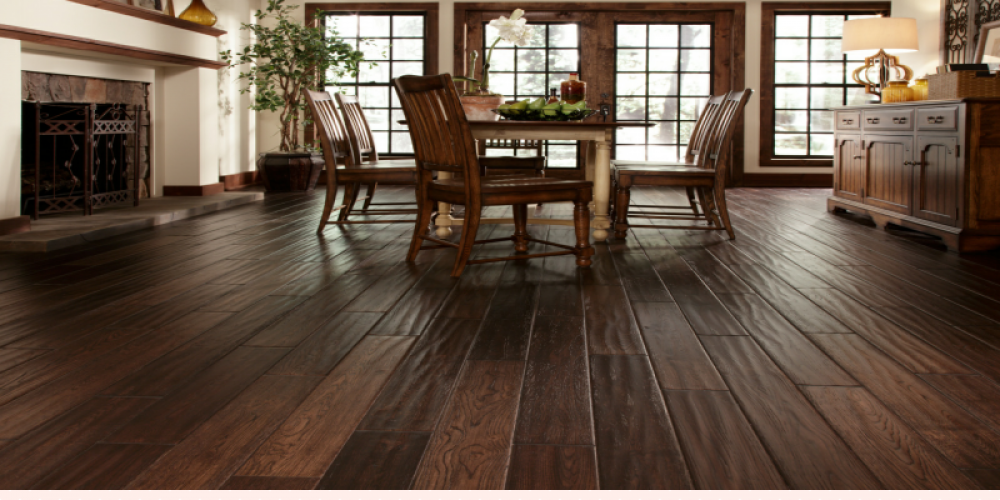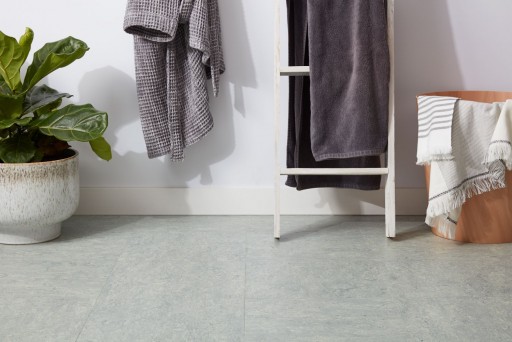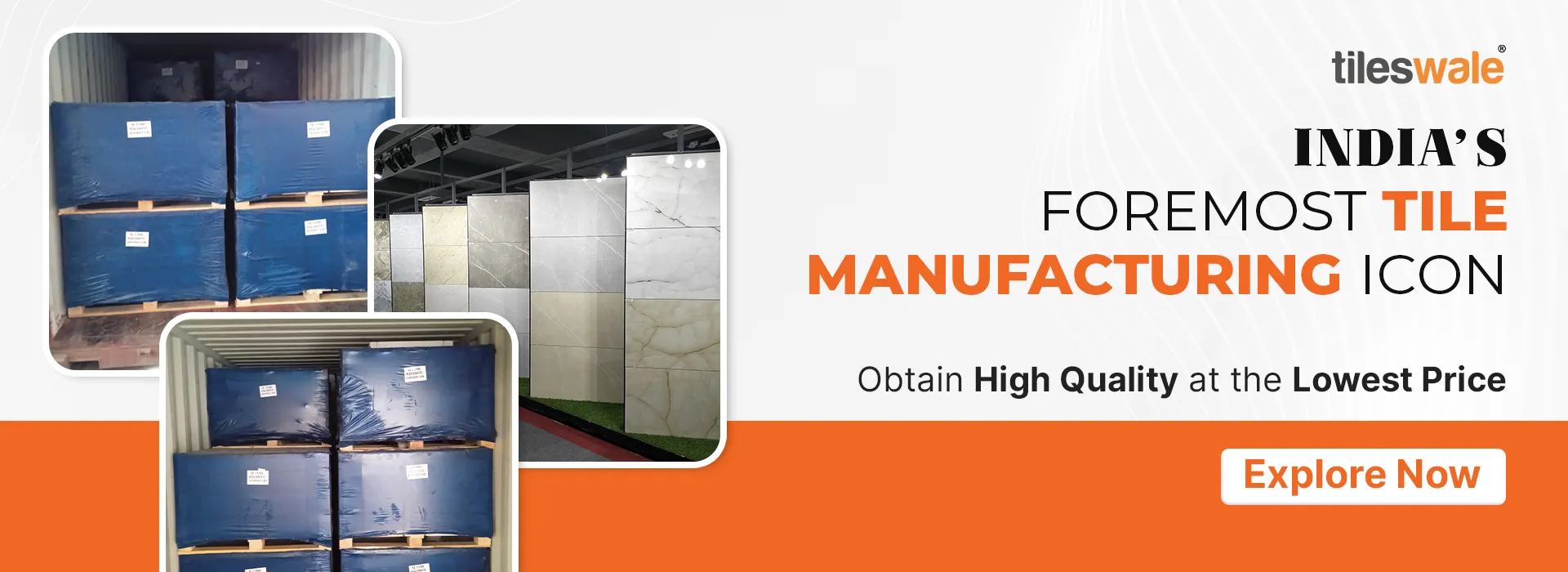
World's First Ceramic-Tile & Sanitaryware Live Marketplace. Get it on Google Play
Get it on App Store
World's First Ceramic-Tile & Sanitaryware Live Marketplace. Get it on Google Play
Get it on App Store
By Tileswale
Tiles Flooring
Hardwood Flooring
Natural Stone Flooring
Engineered Wood Flooring
Laminate Flooring
Vinyl Flooring
SPC Flooring
Linoleuim
Cork Flooring
Different types of flooring can transform the appearance, comfort and value of a home. Floors are not only designed to stand up to heavy foot traffic, but they must also look good while doing it. When deciding on the best type of flooring for your home, you must consider both performance and style. Different types of flooring offer a variety of looks, colors, and textures that range from sleek modern to stunning vintage. Different materials have advantages in different spaces depending on the amount of foot traffic, budget, lifestyle, and other considerations. Different types of hardwood flooring like engineered, solid hardwood, laminate and resilient vinyl provide warmth underfoot as well as durability with regular care and maintenance.
Different kinds of tile flooring such as ceramic, stone or porcelain are strong and easy to maintain, making them great for bathrooms or kitchens where moisture is present. Carpet is cozy underfoot and comes in many styles that can easily fit any area in your home. No matter what look you want to achieve with your floors, there’s sure to be an option with Different Types of Flooring to suit your specific needs.
Each sort of flooring offers its own set of advantages. Evaluate the necessities of every space before selecting the best kinds of flooring for the residence. You may choose from a variety of flooring selections by combining your aesthetic inclinations with the extent of your spending plan. This article explores various kinds of flooring and associated benefits and drawbacks so you can pick the ideal type of flooring solution for your space.
Although there are a plethora of flooring types, some are more popular in newer residences than others. Let's check the most widespread options for flooring.
Tiles are considered one of the most inventive forms of floor solutions. Its varied colors, patterns, forms, and dimensions make it a versatile alternative that might work in any space of your house. The tiles are created by blending fine clay with other selected components and baking it in a furnace to solidify the ceramic.
Dyes applied to the composition provide a wide range of color options in tiles. Select flooring that also is certified for usage on floors to guarantee they will withstand foot activity. Ceramic Tiles, Porcelain Tiles, Glazed Vitrified Tiles, Polished Glazed Vitrified Tiles, and other varieties of tiles are available on the market depending on their manufacturing method.
Hardwood is one of the many types of flooring. Hardwood floors are a high-maintenance yet classic flooring style choice that comes in slabs, logs, and inlaid patterns. Hardwood flooring may be fairly resilient if properly maintained. It is available in several natural hues, including oak and mahogany, and may compliment a wide range of décor trends.
Although hardwood floors are more costly than other alternatives, they are still a great choice for elegance.Floormonk one of the leading hardwood flooring manufacturer in india.
Natural stone flooring is one of the most premium floors available. Traditionally, such floors were exclusively found in posh residences and vintage buildings. They are somewhat pricier than some other flooring alternatives, but the appearance they provide to any space where they are put is unparalleled.
Natural stones are mined straight from quarries and then processed by manufacturers to use in homes. They also allow moisture to soak into the floor because they are constructed of natural stone. However, this is a benefit in and of itself, as natural stone is distinctive and transparent. Your home will shine and have a distinct appearance. Some of the most popular natural stones are Marble, Granite, Limestone, etc.
Engineered wood flooring appears like natural hardwood but has increased moisture protection because they combine an upper surface of authentic hardwood with various levels of ply planks that flow in various directions underneath. Engineered wood flooring is also increasing in popularity due to the numerous available choices.
Engineered wood is an excellent solution for sections of your house where you may be worried about genuine hardwood distorting owing to hot humid conditions, for instance, a wet region. Furthermore, because engineered hardwood floors are made from less expensive solid wood, they are often a more affordable alternative for folks who have their hearts set on plank flooring.
Laminate floors are a composite flooring option that consists of a fiberboard wood foundation that is overlaid with a hardwood or tiles design that is protected by a transparent plastic coating. Identical to engineered wood flooring, it features a polished and protected top layer that is installed to provide solid and lasting planks.
Laminate flooring is a common sort of flooring solution for houses' living rooms, kitchens, dining rooms, bedrooms, corridors, as well as other spaces which are not prone to too much moisture exposure. The variety of designs and textures available make it among the finest forms of floors for homes, as it complements a wide range of residential décor trends.
Vinyl is known to be a very resilient flooring option and provides flexibility and cushioning feel over the surface. The cost of vinyl flooring is typically dictated by the density of the planks or tiles, which is produced by gluing the top-wear layer to a level of felt and cushion. The top-wear layer offers a tear and stain-resistant coating that is both long-lasting and low-maintenance.
Luxury vinyl flooring may be a bit more costly, but it will undoubtedly look prettier than less expensive ones and it promises to be more long-lasting. If you wish your flooring surface to truly match the appearance and feel of hardwood, you might choose luxury vinyl plank.
SPC flooring, which stands for Stone Plastic Composite, is the most recent and revolutionary flooring product. It is a superior version of Luxury Vinyl Tiles (LVT) that is completely waterproof and far sturdier than ordinary LVT.
The body of SPC multi-layered flooring boards is made of stone particles and a PVC polymer mixture, which results in a very lasting dent-resistant substance that doesn't stretch and shrink with climatic factors.

Linoleum has always been a common addition to houses since it is a natural flooring alternative; nevertheless, it used to be a fragile choice, thus people turned away from it. However, in recent years, advancements in the manufacturing of linoleum, as well as a recognition of a number of its intrinsic beneficial features, have generated a rebirth in the application of this flexible and resilient flooring solution.
Linoleum is a robust, comfortable flooring material that is unfazed by moderate surface conditions and does not easily sustain fire. It has been carefully toughened to withstand dents and is not affected by fats, greases, or other organic solutions.
Cork is derived from the skin of the cork oak tree and is taken on a regular basis off mature trees in commercial cultivation. As a result, cork is a perfectly natural, reoccurring, and readily replenishable flooring substance. /
Cork is crushed up, flattened, and shaped into panels joined with resins to make flooring goods. To be true, cork flooring has numerous advantages, and its current appeal has resulted in cork floor installation nearly all over the household.
Living Rooms are the most happening space in a house and with the most footfalls as well, hence it requires a beautiful yet sturdy flooring solution. We recommend Tiles, Hardwood Floors for its sheer aesthetics and value, Natural Stone, Engineered Wood, Laminate, or SPC Flooring for this space.
The heart of a home requires an even worthy addition when it comes to its floors, hence we suggest going for SPC Flooring, Tiles, Vinyl Flooring, Linoleum or Cork Flooring.
Of course you need to choose a more water resistant flooring solution for bathroom and Tiles, Natural Stones, or even SPC Flooring solutions.
Your most personal space requires a more comfortable and cozy flooring and hence we recommend Cork Flooring, Tiles, SPC Flooring or even Natural Stones for it.
We hope the article has enough to help you choose your next flooring option, or maybe just add to your existing knowledge.
The different types of floorings include hardwood, laminate, vinyl plank, carpet, ceramic tile, and natural stone. Each option has its own unique benefits and drawbacks that should be considered before making a final decision.
In 2022, the trend for flooring will be towards more eco-friendly materials such as bamboo and cork, as well as high quality vinyl plank flooring that can mimic the look of hardwood. Additionally, more homeowners are looking for sustainable options with recycled content or natural materials.
We have numerous types of flooring, including stone, hardwood, laminate, vinyl, tile, carpet, cork and linoleum. Each type provides a unique style and level of comfort to the home.
Article Updated - 13 December 2022
>> 12 Different Types of Tiles
Submit your inquiries, we will see the rest
size:
Quantity:

+ Requirements

We have received your Inquiry. We will soon connect you with relevent Sellers via tileswale App. download now!!

